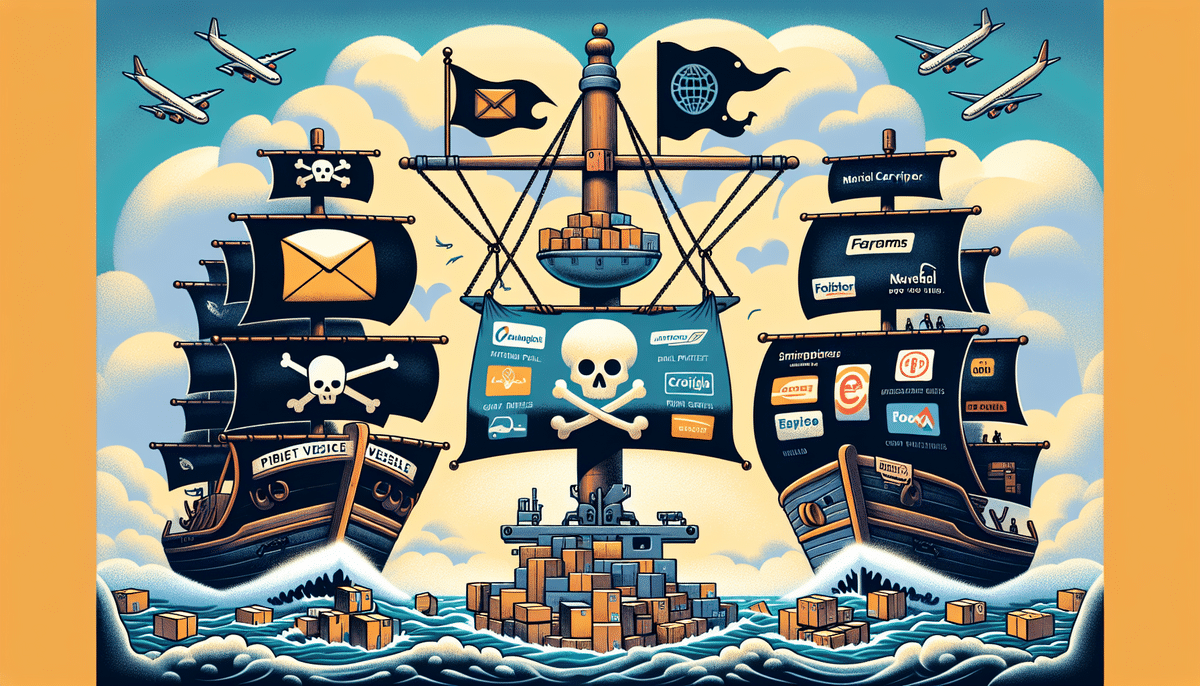ShippingEasy vs Pirate Ship: An In-Depth Comparison
When it comes to shipping platforms, business owners have a myriad of options to choose from. Among them, ShippingEasy and Pirate Ship are two prominent names. But which one is better suited for your business needs? This comprehensive comparison will delve into the features, pricing, pros and cons, and other critical factors to help you make an informed decision.
ShippingEasy Overview
Features
ShippingEasy is a cloud-based shipping and inventory management platform designed to help businesses streamline their shipping processes. Key features include:
- Shipping rate comparison across multiple carriers.
- Automated label printing.
- Order tracking and management.
- Inventory management tools.
- Advanced reporting and analytics.
Integration with eCommerce Platforms
ShippingEasy seamlessly integrates with a variety of eCommerce platforms, including Shopify, WooCommerce, and Amazon. These integrations enable businesses to manage orders and shipping processes from a centralized dashboard, enhancing efficiency and reducing manual errors.
Automation and Reporting
One of ShippingEasy's standout features is its automation capability. Businesses can set up rules to automate repetitive tasks, such as selecting shipping carriers based on package weight and destination. Additionally, ShippingEasy offers robust reporting and analytics tools that provide insights into shipping costs, delivery times, and other vital metrics, enabling data-driven decision-making.
Pirate Ship Overview
Features
Pirate Ship is a user-friendly, cloud-based shipping platform that simplifies the shipping process for businesses. Its primary features include:
- Discounted shipping rates through partnerships with major carriers.
- Batch label printing for high-volume shipping.
- Address validation to minimize shipping errors.
- Real-time tracking information for shipments.
Integration with eCommerce Platforms
Pirate Ship integrates with popular eCommerce platforms such as WooCommerce, Etsy, and Amazon. These integrations facilitate seamless order import and shipping management, making it easier for businesses to handle their shipping operations efficiently.
Pricing Structure
Pirate Ship offers a straightforward pricing model with no monthly fees. Instead, users pay for shipping labels as they are purchased. The platform provides some of the lowest shipping rates in the industry by leveraging its partnerships with carriers like USPS, UPS, and FedEx. Additionally, Pirate Ship offers a free plan for businesses shipping fewer than 50 packages per month, making it an attractive option for small businesses and startups.
Pros and Cons
ShippingEasy Pros and Cons
- Pros:
- Seamless integration with multiple eCommerce platforms.
- Advanced reporting features for tracking shipping expenses and identifying cost-saving opportunities.
- 24/7 customer support via phone, email, and live chat.
- Cons:
- Higher cost, which may be prohibitive for small businesses.
- Occasional platform slowdowns.
- Customer support may experience delays during peak periods.
Pirate Ship Pros and Cons
- Pros:
- Simple and intuitive user interface.
- Competitive shipping rates due to carrier partnerships.
- Free plan available for low-volume shippers.
- Real-time tracking information for shipments.
- Cons:
- Limited integration options compared to ShippingEasy.
- Fewer advanced features, such as inventory management.
- May not be ideal for businesses with high shipping volumes.
- Limited customer support channels.
Comparative Analysis
Ease of Use
Both ShippingEasy and Pirate Ship offer user-friendly interfaces. However, Pirate Ship is often praised for its simplicity, making it an excellent choice for businesses new to shipping platforms. ShippingEasy, while slightly more complex due to its advanced features, offers a comprehensive suite of tools for businesses looking to scale their operations.
Pricing
Pirate Ship generally offers more affordable pricing, especially for small businesses and startups, with no monthly fees and low per-label costs. ShippingEasy, on the other hand, has a tiered pricing structure that may be more suitable for larger businesses requiring extensive features and support.
Customer Support
ShippingEasy provides 24/7 customer support through various channels, including phone, email, and live chat. Additionally, they offer personalized onboarding and training sessions. Pirate Ship offers email support during business hours and maintains a community forum for user assistance. While both platforms provide support, ShippingEasy's more extensive support options may be beneficial for businesses requiring immediate and comprehensive assistance.
Integration Capabilities
ShippingEasy excels in its integration capabilities, supporting a wide range of eCommerce platforms like Shopify, WooCommerce, and Amazon. This makes it an ideal choice for businesses operating across multiple sales channels. Pirate Ship offers integrations with popular platforms such as WooCommerce, Etsy, and Amazon, but its selection is somewhat more limited compared to ShippingEasy.
Choosing the Right Shipping Platform for Your Business
Selecting between ShippingEasy and Pirate Ship depends on your business's specific needs and shipping requirements. Consider the following factors:
- Business Size: Larger businesses with high shipping volumes may benefit from ShippingEasy's advanced features and comprehensive support, while smaller businesses might find Pirate Ship's affordability and simplicity more suitable.
- Shipping Volume: If you ship a large number of packages monthly, ShippingEasy's automation and reporting tools can help manage and optimize your shipping processes efficiently.
- Feature Requirements: Businesses needing inventory management and multi-channel integrations may prefer ShippingEasy, whereas those looking for cost-effective shipping solutions with essential features may lean towards Pirate Ship.
- Budget: Pirate Ship offers a free plan and generally lower costs, making it ideal for startups and small businesses with limited budgets.
Real-World Examples of Businesses Using ShippingEasy and Pirate Ship
Various businesses leverage ShippingEasy and Pirate Ship to enhance their shipping operations:
- ShippingEasy: Candy Club, a monthly subscription service, utilizes ShippingEasy to manage shipments across different sales channels, ensuring timely deliveries and customer satisfaction.
- Pirate Ship: Wild Botanicals, a small business specializing in organic skincare products, employs Pirate Ship to simplify its shipping processes and take advantage of discounted shipping rates.
User Reviews of ShippingEasy and Pirate Ship
Feedback from users of both platforms is predominantly positive:
- ShippingEasy: Users appreciate its extensive features, seamless integrations, and reliable customer support. Some have noted that the platform can be costly for smaller operations.
- Pirate Ship: Users commend its affordability, ease of use, and competitive shipping rates. However, some users have mentioned limitations in integration options and support channels.
Tips for Maximizing Your Shipping Platform
To get the most out of your chosen shipping platform, consider the following tips:
- Utilize automation features to reduce manual tasks and minimize errors.
- Regularly review and analyze shipping reports to identify cost-saving opportunities.
- Take advantage of discounted shipping rates by consolidating shipments or negotiating with carriers.
- Integrate your shipping platform with your eCommerce platforms to streamline order management.
- Stay updated with platform updates and new features to continuously optimize your shipping processes.
Conclusion: Which Shipping Platform is the Right Choice for You?
Both ShippingEasy and Pirate Ship offer valuable features tailored to different business needs. ShippingEasy is ideal for larger businesses seeking advanced features, comprehensive integrations, and robust support. In contrast, Pirate Ship is well-suited for small to medium-sized businesses looking for an affordable, user-friendly shipping solution with competitive rates.
Ultimately, the best choice depends on your specific business requirements, shipping volume, budget, and desired features. Carefully evaluate both platforms against your needs to select the shipping solution that provides the most value and enhances your operational efficiency.






















